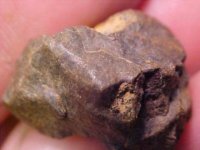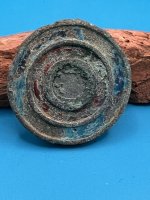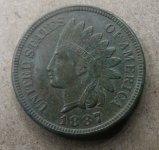silverthorn
Jr. Member
- Mar 19, 2008
- 56
- 0
- Detector(s) used
- Old willow divining rod... No more wire hangers !!
Hey Folks, I bought another meteorite today; found in North West Africa, 10.49 grams. I have to get into my safe this week and pull out some of my silver objects. I am addicted to silver! I buy, find and barter for silver, .999 pure or .925 sterling. I have some unknown grades too. Lots of coins. Look me up if you want to chat about silver fever !! See ya later, alligator !! ~Silverthorn






